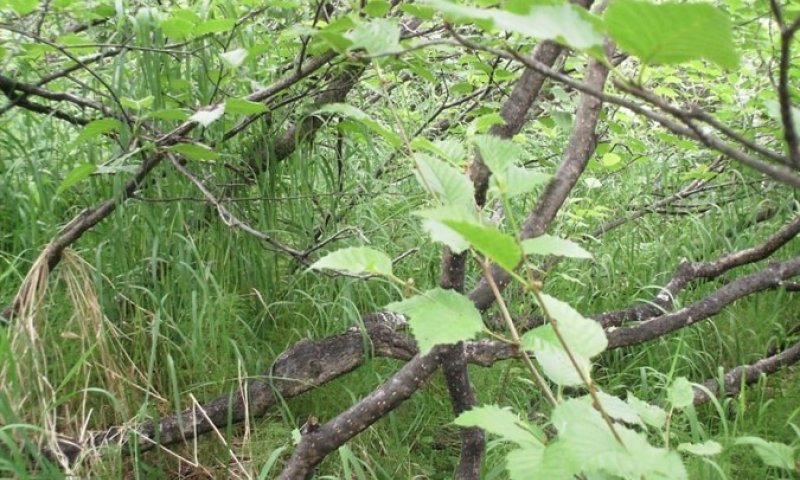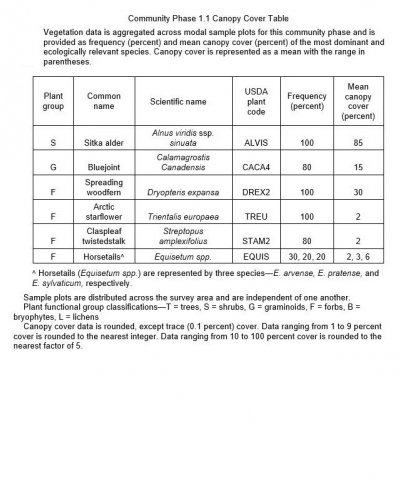

Natural Resources
Conservation Service
Ecological site R236XY105AK
Subarctic Scrub Mosaic Gravelly Hillslopes
Last updated: 2/13/2024
Accessed: 12/21/2025
General information
Provisional. A provisional ecological site description has undergone quality control and quality assurance review. It contains a working state and transition model and enough information to identify the ecological site.
MLRA notes
Major Land Resource Area (MLRA): 236X–Bristol Bay-Northern Alaska Peninsula Lowlands
The Bristol Bay-Northern Alaska Peninsula Lowland Major Land Resource Area (MLRA 236) is located in Western Alaska. This MLRA covers approximately 19,500 square miles and is defined by an expanse of nearly level to rolling lowlands, uplands and low to moderate hills bordered by long, mountain footslopes. Major rivers include the Egegik, Mulchatna, Naknek, Nushagak, and Wood River. MLRA 236 is in the zone of discontinuous permafrost. It is primarily in areas with finer textured soils on terraces, rolling uplands and footslopes. This MLRA was glaciated during the early to middle Pleistocene. Moraine and glaciofluvial deposits cover around sixty percent of the MLRA. Alluvium and coastal deposits make up a large portion of the remaining area (Kautz et al., 2012; USDA, 2006).
Climate patterns across this MLRA shift as one moves away from the coast. A maritime climate is prominent along the coast, while continental weather, commonly associated with Interior Alaska, is more influential inland. Across the MLRA, summers are general short and warm while winters are long and cold. Mean annual precipitation is 13 to 50 inches, with increased precipitation at higher elevations and areas away from the coast. Mean annual temperatures is between 30 and 36 degrees F (USDA, 2006).
The Bristol Bay-Northern Alaska Peninsula MLRA is principally undeveloped wilderness. Federally managed land includes parts of the Katmai and Aniakchak National Parks, and the Alaska Peninsula, Becharof, Togiak and Alaska Maritime National Wildlife Refuges. The MLRA is sparsely populated. Principal communities include Dillingham, Naknek, and King Salmon. Commercial fishing in Bristol Bay and the Bering Sea comprises a major part of economic activity in the MLRA. Other land uses include subsistence activities (fishing, hunting, and gathering) and sport hunting and fishing (USDA, 2006).
Classification relationships
Alaska Vegetation Classification: Closed tall scrubland (Viereck et al., 1992)
Ecological site concept
This ecological site is on hill and mountain backslopes. Site elevation is between 280 and 3,260 feet above sea level. Slopes gradients are strong to steep (10 – 38 percent). Soil fertility and development are low on these soils, making them ideal for nitrogen-fixing alder. Alder creates a positive feedback loop that continues to favor alder in the overstory while supporting shade-tolerant species in the understory.
Associated sites
| R236XY106AK |
Subarctic Dwarf Scrub Dry Loamy Slopes R236XY106AK is upslope of this site on hills. R236XY104AK describes a closed ericaceous scrubland on hill crests. Soils develop from loess, are extremely acidic and have a spodic horizon. These crests are also susceptible to wind exposure, favoring prostrate shrubs. The vegetation in R236XY105AK is a result of the different site and soil conditions, including weakly developed soils with upwards of 65% soil rock fragments. |
|---|---|
| R236XY104AK |
Alpine Dwarf Scrub Gravelly Slopes R236XY104AK is upslope of this site on hills. R236XY104AK describes a dwarf scrubland on hill and mountain summits and shoulders. Soils are rocky with a deep restrictive layer. Wind exposure limits plant species and height. |
Similar sites
| R236XY124AK |
Subarctic Tall Scrub Loamy Convex Hillslopes Both sites support dense alder in the reference plant community. R236XY124AK describes an alder and willow community on wetter soils than those of this site. R236XY105AK appears as an alder-spirea mosaic that does not have an herbaceous post-erosion disturbance community. |
|---|
Table 1. Dominant plant species
| Tree |
Not specified |
|---|---|
| Shrub |
(1) Alnus viridis subsp. sinuata |
| Herbaceous |
(1) Dryopteris expansa |
Click on box and path labels to scroll to the respective text.

